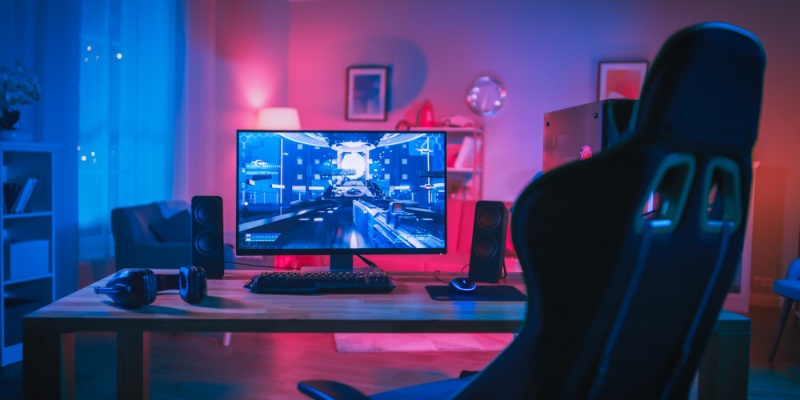1. Introduction: The Universal Quest for Gaming GPU Excellence
“What’s the best GPU for gaming?” – this question fuels endless Reddit threads, benchmark wars, and gamer wishlists. Whether you’re chasing 1440p perfection, building a budget rig, or prepping for future titles, choosing the right graphics card defines your experience. But while gamers obsess over frames and settings, a seismic shift is underway: those same GPUs now power the AI revolution. And when raw computational muscle meets enterprise-scale demands, solutions like WhaleFlux become the unsung heroes – transforming expensive hardware into efficient, cost-effective intelligence engines.
2. Decoding the Best GPU for Gaming (2024-2025)
Let’s break down the champions across categories:
Budget Warriors (<$200)
- Best cheap GPU for gaming (new): Intel Arc A580 ($180) surprises with 1440p-capable DX12/Vulkan performance.
Mid-Range Kings ($300-$500)
- Best budget NVIDIA: RTX 4060 Ti 16GB ($450) balances ray tracing and frame generation.
Elite Performance
- Best GPU for high FPS competitive gaming: RTX 4080 Super ($1,000) delivers 240+ fps in esports titles.
- Best GPU for gaming 2025: Future-proof with the RTX 4090’s 24GB VRAM and brute-force 4K power.
3. When Gaming GPUs Hit Their Limits: The AI Wake-Up Call
But try running a 70B-parameter LLM on your RTX 4090, and reality bites:
- VRAM Wall: Gaming cards max out at 24GB – half the 48GB+ needed for modern AI models.
- Scalability Gap: No NVLink support = no efficient multi-GPU training.
- Endurance Test: Consumer GPUs throttle during weeks-long training (no data-center cooling/redundancy).
Key Insight: Your “best gaming GPU” is a sports car. AI needs a freight train.
4. Industrial-Grade GPUs: Where AI True Power Lives
Enter the titans reshaping AI:
- NVIDIA H100: The undisputed king. 80GB VRAM + FP8/Tensor Cores slash LLM training time by 30x.
- NVIDIA H200: 141GB HBM3e memory – built for trillion-parameter inference.
- NVIDIA A100: The reliable workhorse (40GB/80GB) for cost-sensitive deployments.
- RTX 4090 in AI: Useful only for prototyping or fine-tuning in clusters.
Yet owning these $30,000+ cards is just step one. The real challenge? *Managing clusters without wasting $4,000/month per idle GPU.*
5. Optimizing AI GPU Power: Enter WhaleFlux
This is where WhaleFlux transforms chaos into ROI. As a purpose-built GPU orchestration platform for AI teams, it solves critical pain points:
- Intelligent Load Balancing: Dynamically allocates training/inference across mixed fleets (H100/H200/A100/RTX 4090), boosting utilization by 60-70%.
- Cost Control: Rent or purchase enterprise GPUs monthly (no hourly billing). Predictable pricing slashes cloud spend.
- Zero-Downtime Stability: Automated failover ensures week-long jobs never crash.
- Simplified Scaling: Deploy models 3x faster with one-click cluster provisioning.
“WhaleFlux turns $40,000 H100s from luxury items into profit engines – cutting waste while accelerating R&D.”
6. Conclusion: Beyond the Gaming Rig
Gaming GPUs deliver breathtaking visuals – but AI demands industrial resilience. The “best GPU” isn’t about frames or ray tracing when training ChatGPT-scale models:
It’s about clusters intelligently managed to maximize ROI.
Final Takeaway:
The best GPU for gaming fits your budget.
The best GPU for AI fits your cluster – optimized by WhaleFlux.
Ready to Unleash AI at Scale?
Stop overpaying for idle GPUs. Explore WhaleFlux’s NVIDIA H100/H200/A100/RTX 4090 clusters today:
Optimize Your AI Infrastructure with WhaleFlux
FAQs
1. What’s the best NVIDIA GPU that balances great gaming performance with AI development capabilities?
The NVIDIA GeForce RTX 4070 Super offers an excellent balance. It delivers superb 1440p gaming performance with DLSS 3 while providing enough power for AI prototyping and fine-tuning. For maximum performance in both areas, the RTX 4090 is the ultimate choice.
2. How important is VRAM when choosing a GPU for both gaming and AI work?
Very important. For modern gaming at higher resolutions and for running larger AI models, we recommend at least 12GB. GPUs like the RTX 4070 Ti Super (16GB) and RTX 4090 (24GB) provide ample VRAM for both demanding games and substantial AI workloads.
3. Does DLSS technology relate to AI capabilities in professional work?
Yes, directly. DLSS uses NVIDIA’s Tensor Cores – the same AI acceleration technology used for deep learning tasks. A GPU that excels at DLSS inherently has strong AI processing capabilities, making cards like the RTX 40 series excellent for both gaming and AI development.
4. When should a gaming PC upgrade to professional AI GPUs?
When your AI workloads outgrow what a single RTX 4090 can handle. For training large models or batch processing, WhaleFlux provides access to NVIDIA data center GPUs like H100 and A100 through monthly rental plans, letting you scale your AI power while keeping your gaming rig separate.
5. Can I build a multi-GPU setup for AI using gaming cards?
While possible, managing multi-GPU setups for AI requires significant expertise. WhaleFluxsolves this by offering pre-configured NVIDIA GPU clusters with intelligent resource management, ensuring optimal utilization whether you need multiple RTX 4090s or professional H100s, available through flexible monthly terms.

